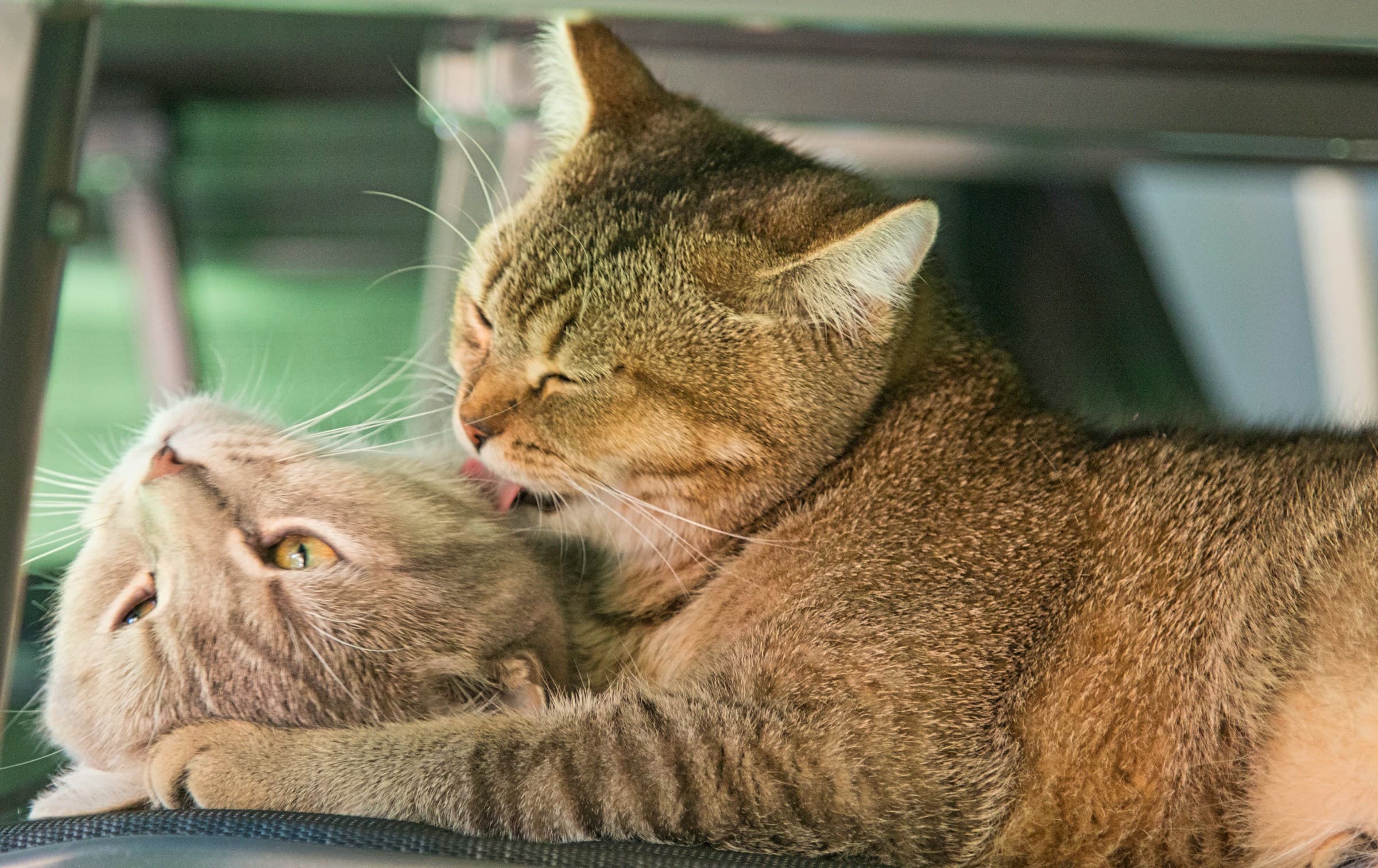Bringing a new cat home, where an older cat lives already, can be a delicate process. Cats are naturally territorial so introduce them slowly and carefully to avoid tension. Go through each step and follow the directions to make the process go smoothly.
Step 1 - Setting Up the Home for Your New Cat
The VCA Animal Hospitals strongly recommends setting up a safe space for the new cat as it will help them adjust to the new environment. Essentials like food, water, a litter box and a cozy spot to sleep will help. This will be the new cat's personal sanctuary where they can feel safe and adjust without feeling overwhelmed. Your resident cat shouldn’t be able to get into this space in the beginning as it will help prevent territorial disputes.
Step 2 - Keep the Cats Separated
For the first few days after bringing your new cat home, keep them apart from the existing kitty. This can lessen stress and help avoid any early confrontations. Without actually touching each other, the two felines can become accustomed to the presence. Even from far apart, they will be able to smell and hear each other. It eases the awkwardness of being together face-to-face.
Step 3 - Scent Swapping
Sense of smell helps cats understand their surroundings. Start swapping their scents to get them used to each other. Gently rubbing a soft cloth on one cat and then placing it near the other is one way. The other is swapping their bedding. Getting familiar with each other’s scent in a non-threatening way helps the transition when they finally meet.
Step 4 - Allow Exploration of Each Cat’s Area
After a few days of scent swapping, let each cat explore the other’s area while the other is not present. This lets them get used to each other’s scent more deeply and helps prevent territorial behavior later on. Supervise this process to make sure everything goes smoothly and consider using treats to create positive associations with the other cat’s scent.
Step 5 - Let Them Meet Through a Barrier
You can organize a face-to-face meeting once they are comfortable with each other’s scent. Try introducing cats to each other by placing a barrier. Use a baby gate or keep one cat in a carrier for these initial meetings. They can see and sniff each other but there is no risk of a physical fight. Observe their body language closely. Warning signs when introducing cats are hissing, growling, or puffed-up fur. When you notice any of these, give them more time apart.
Step 6 - Remove the Barrier
If the initial barrier meetings go well, you can try removing the barrier. Let the cats approach each other on their own terms, but keep the interactions brief at first. Stay calm and don’t force them to interact. If you notice any stress or aggression, separate them and try again later. Remember, patience is key.
Step 7 - Conduct Supervised Playtime
When the cats seem more comfortable around each other, start having supervised playtime. Use toys that both cats enjoy to encourage positive interactions. This helps them associate each other’s presence with fun and good experiences. Keep these play sessions short at first and gradually increase the time as they become more at ease with each other.
Step 8 - Free Access Without Supervision for Short Periods
When both cats are relaxed and comfortable during supervised play, you can start allowing them to have free access to each other without supervision for short periods. Start with brief intervals and gradually increase the duration as you see fit. Continue to monitor their behavior to make sure they’re getting along. Look for positive signs your new cat is adjusting, like grooming themselves or eating normally around the other cat.
When to Contact Your Vet About Introducing Cats
So you have the answer to how to introduce an old cat to the others but do involve the vet in case of ongoing aggression, anxiety, or signs of physical harm. They can provide advice on how to get cats to get along. According to PetMD, some cats have a genetic disposition towards being shy, while others are playful and outgoing. It often pays to understand your cat’s personality well because it helps introduce them to a new feline. You can even use a cat DNA test to get more information on your cat’s ancestry and breed characteristics.
Frequently Asked Question
What if my cats are showing aggression towards each other? If your cats are showing aggression, separate them right away and try reintroducing them more slowly. If the aggression continues, consult your vet for further advice.
How to introduce an old cat to my kitten?
Kittens are delicate and easily scared, so do not let them out of your sight. Keep the new cat confined to a crate till they show no signs of aggression.



